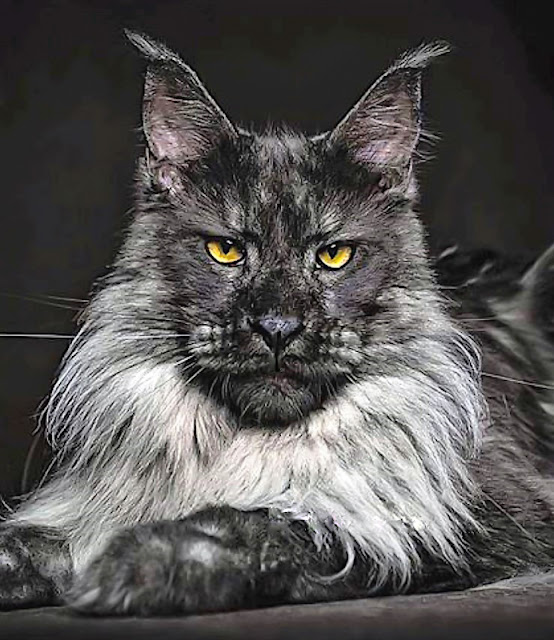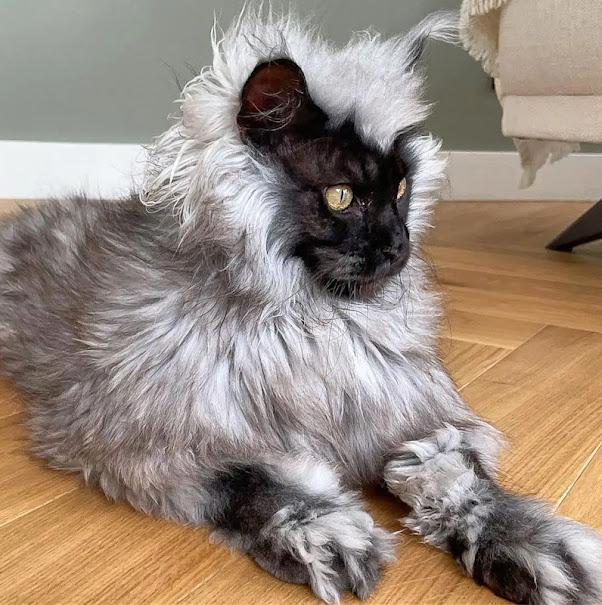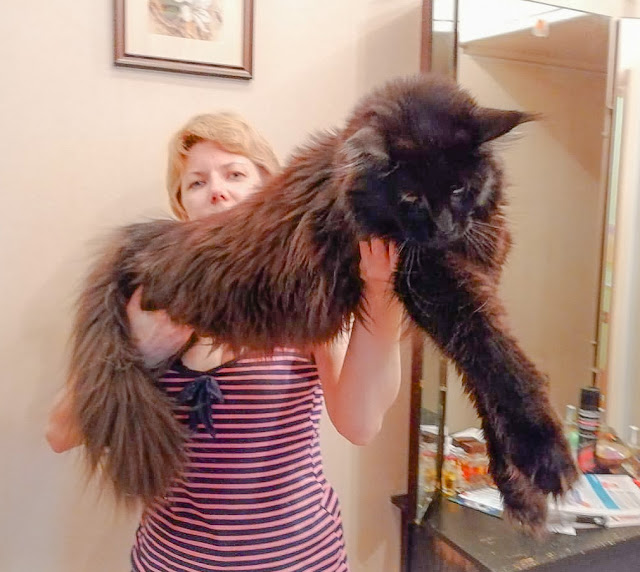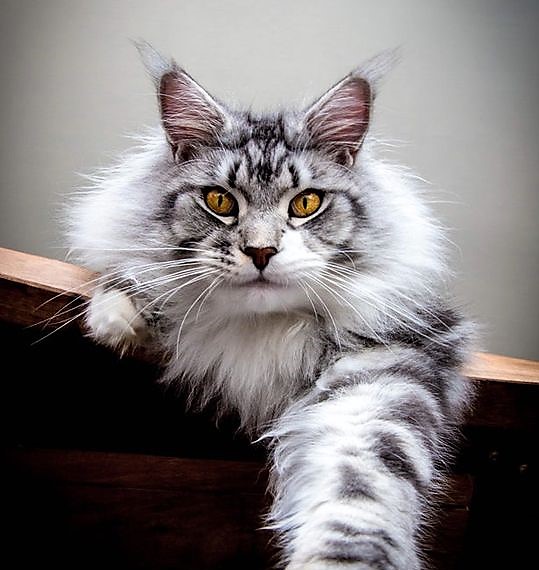Hyped up story of a 'Maine Coon' who 'pants like a dog' at playtime
A Maine coon kitten has gone viral on social media after her owners caught her unusual playtime behaviour on camera. Well, this whole story is a fabrication really. Sorry to be a killjoy but I like reality. The internet has run out of ideas so it makes up stories. Normal.
The news media describes this cat as a Maine Coon and, frankly, I don't see that this cat is a Maine Coon cat judging by its appearance. The appearance of this cat is of a standard calico cat. If the cat is a Maine Coon cat it is non-standard and would not pass the breed standard in my view.
Please excuse the occasional typo due to preparing these articles at breakneck speed using Dragon Dictate. I don't have a proof reader.
Secondly, although slightly unusual, it is not very rare for cats to pant like dogs. It happens all the time but often we don't notice it. Perhaps it is the comparison between cats and dogs which makes a cat panting look unusual and rather strange but in truth it is not.
And lastly, the video hasn't gone viral. It's attracted some attention but nothing special because it's not a very special video.
As you must know, panting is a cooling process. The cat has become hot during active play and I guess the room where this video was filmed was hot.
The cat starts to pant to cool themselves down. Panting is based upon the latent heat of evaporation, a physical property, which humans experience when they sweat.
The evaporation of saliva on the tongue cools the tongue making the cat feel cooler. The evaporation of perspiration on a person absorbs heat and make them feel cooler. It's the same process. I describe it below.
 |
| Screenshot from the video. |
Latent heat of evaporation explained by ChatGPT
The latent heat of evaporation is the amount of energy required to convert a substance from a liquid to a vapor at constant temperature and pressure. This process is central to the cooling effect observed when evaporation occurs.
### Key Concepts
1. **Latent Heat**: This is the energy absorbed or released by a substance during a phase change (such as from liquid to vapor) without a change in temperature. For evaporation, the energy absorbed is the latent heat of vaporization.
2. **Molecular Kinetic Energy**: In a liquid, molecules move with a range of kinetic energies. Some molecules near the surface of the liquid have enough energy to overcome intermolecular forces and escape into the vapor phase.
3. **Energy Absorption**: When a molecule evaporates, it absorbs energy equal to the latent heat of vaporization from its surroundings. This energy is used to overcome the intermolecular forces holding the molecules together in the liquid.
### The Cooling Process
- **Evaporation and Kinetic Energy**: During evaporation, the highest-energy (fastest-moving) molecules escape from the liquid's surface. This removal of high-energy molecules reduces the average kinetic energy of the remaining liquid molecules, leading to a decrease in temperature.
- **Heat Transfer**: To maintain the liquid at a stable temperature, energy (in the form of heat) must be absorbed from the surrounding environment to replace the energy lost by the evaporating molecules. This transfer of heat from the environment into the liquid causes the surroundings to cool down.
- **Dynamic Equilibrium**: In an open system, as more molecules evaporate, the liquid continues to lose energy and cool down. If the system is closed, a dynamic equilibrium can be reached where the rate of evaporation equals the rate of condensation, stabilizing the temperature.
### Real-World Example: Sweating
When you sweat, your body releases moisture (sweat) onto your skin. As this sweat evaporates, it absorbs heat energy from your skin, cooling you down. The higher the ambient temperature and the lower the humidity, the more efficient this cooling process becomes because the evaporation rate increases under these conditions.
### Summary
The latent heat of evaporation is a cooling process because it involves the absorption of heat energy from the surroundings during the phase transition of a liquid to a vapor, thereby lowering the temperature of the remaining liquid and its immediate environment.
-----------










Comments
Post a Comment
Please share your Maine Coon experiences.